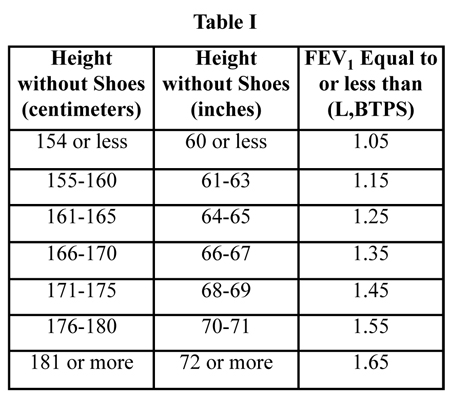Chronic Bronchitis
How to Get Disability Benefits for Chronic Bronchitis by Meeting a Listing
To determine whether you are disabled at Step 3 of the Sequential Evaluation Process, the Social Security Administration will consider whether your chronic bronchitis is severe enough to meet or equal the chronic bronchitis listing. The Social Security Administration has developed rules called Listing of Impairments for most common impairments. The listing for a particular impairment describes a degree of severity that Social Security Administration presumes would prevent a person from performing substantial work. If your chronic bronchitis is severe enough to meet or equal the listing, you will be considered disabled.
The listing for chronic bronchitis is listing 3.07, which has two parts, A and B. To meet the listing you must satisfy either part A or B despite treatment.
Meeting Social Security Administration Listing 3.07A for Chronic Bronchitis
You will meet listing 3.07A if you have chronic bronchitis as a result of impairment of pulmonary function due to extensive disease. Your one-second forced expiratory volume (FEV1) reported in pulmonary function testing must be equal to or less than the values specified in Table I below (corresponding to the person’s height without shoes):

Chronic Pulmonary Insufficiency
An important feature of all parts of the listing for pulmonary disease is that 1) chronic impairment must be present, and 2) all pulmonary diseases can potentially qualify. No special meaning should be given to the word “chronic,” because it is the statutory 12 month duration requirement or prognosis of death that establishes the time-based qualification for disability. “Chronic” is only a reminder that short-term pulmonary disorders, such as pneumonia responding to antibiotics, are not considered under the listing. In terms of diagnosis, treatment and prognosis, the specific disorder matters—both in clinical medicine and in disability determination. In disability determination, for example, there must be consideration of whether the disorder being evaluated will satisfy the 12-month basic duration requirement of all impairments.
Abnormal pulmonary function studies are not likely in the presence of chronic bronchitis alone without some other co-existing lung disease. When abnormalities are present, they are usually obstructive in nature. More serious obstructive deficits are likely when there is a history of cigarette smoking with resulting emphysema and chronic bronchitis. Hypoxemia, or decreased oxygenation of blood, is not a usual finding in chronic bronchitis.
Meeting Social Security Administration Listing 3.07B for Chronic Bronchitis
You will meet listing 3.07B if you have episodes of bronchitis, requiring physician intervention, occurring at least once every two months or at least six times a year. Each inpatient hospitalization for longer than 24 hours for treatment counts as two episodes, and an evaluation of at least 12 consecutive months must be used to determine the frequency of episodes.
When chronic bronchitis is episodic in nature, the frequency and intensity of episodes that occur despite prescribed treatment are often the major criteria for determining the level of impairment. Documentation for these exacerbations should include available hospital, emergency facility and/or physician records indicating the dates of treatment; clinical and laboratory findings on presentation, such as the results of spirometry (a type of respiratory test) and arterial blood gas studies (ABGS); the treatment administered; the time period required for treatment; and the clinical response. Episodes of bronchitis are defined as prolonged symptomatic episodes lasting one or more days and requiring intensive treatment, such as intravenous bronchodilator or antibiotic administration or prolonged inhalational bronchodilator therapy in a hospital, emergency room or equivalent setting. Hospital admissions are defined as inpatient hospitalizations for longer than 24 hours. The medical evidence must also include information documenting adherence to a prescribed regimen of treatment as well as a description of physical signs.
Continue to Residual Functional Capacity Assessment for Chronic Bronchitis.
Go back to About Chronic Bronchitis and Disability.
